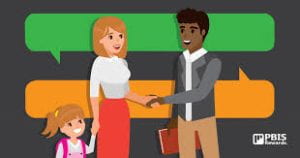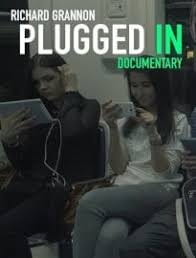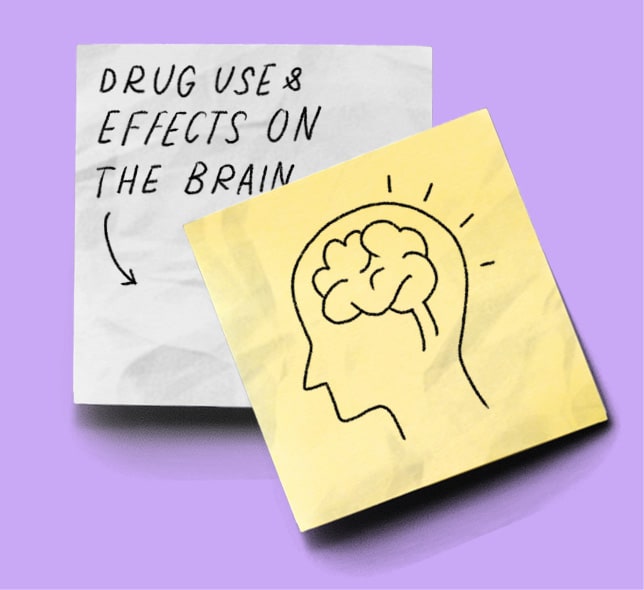Beyond the Classroom Walls: Building Stronger Home-School Relationships
 https://www.pbisrewards.com/blog/improving-parent-teacher-communication/%5B/caption%5D
https://www.pbisrewards.com/blog/improving-parent-teacher-communication/%5B/caption%5D
Part 1:
Home/school connections are beyond an occasional parent-teacher meeting or report card sent home in the student’s backpack. Having and maintaining a good home/school connection between the families and teachers promotes a healthier learning and growth environment. Some ways in which this can be done are having effective communication and involving the families in school activities. By embracing a culture of inclusivity, transparency, and mutual respect, teachers and families can create a supportive environment for the students.
Borovoy (2016) describes many ideas for teachers and parents to connect and engage throughout the school year. This article shows multiple important factors along the lines of how parents can get involved, how to effectively communicate, and strategies, and tips for teachers with communicating with families.
Aguilar (2011) gives twenty tips for developing positive relationships with parents. It’s important to have good facial expressions, know their names, communicate often, ask questions, and listen! This will maintain a positive and healthy relationship between the teachers and families. By doing so, the students will have a better learning experience and feel more supported by their family and their teachers. This article would be beneficial for teachers to read over to be more confident in themselves before communicating to their student’s families.
Lastly, Breiseth (2021) is an important read since it includes ELL families. Communicating with ELL families can be a struggle but this article gives 10 strategies on how to make it easier for both the teacher and families. Communicating can be extremely challenging and has many responsibilities that come with it so learning how the families prefer to communicate and actively engaging in resources can make the entire process a lot easier. Breiseth (2021) stated that school districts are legally required to provide information in families’ home languages and that translators have multiple options. This is beneficial to know since these rules and regulations can ease any stress and anxiety about communicating with the families and faculty members.
One film we watched was The 5-Minute Film Festival: Parent-Teacher Partnerships showed a video of 300 parents receiving diplomas and being alongside teachers in the classrooms as parent mentors. The idea of parents assisting in the classrooms could be beneficial to have an extra set of eyes in the classroom, build relationships with everyone in the school, and help the teachers in the classrooms. I believe there could be some downside to this idea if a child becomes too attached to their parent or another child gets discouraged if their parent isn’t able to come into the class. It has many positive and negative aspects behind it but it could be a great idea to at least try!
Another film we watched was 9 Ways to Communicate with Parents for Teachers/Increase Parent Communication! This video gave many tips and strategies for communicating with parents in a timely matter. As stated earlier, improving your relationships with students’ parents can lead to students being more successful in the classroom! It’s important to acknowledge that not every strategy will work for every teacher or parent so it’s important to not be discouraged by it and change things up until you find what works best for both the parents and teachers!
For this week’s blog, we had the opportunity to attend a Board of Education Meeting. I attended the Bellmore-Merrick School District Board of Education Meeting on March 6, 2024. Going into it, I honestly thought it was going to be very boring but I was actually very engaged and interested the entire time. I even told my mom about it and said I wanted to go to another one! Throughout the meeting, the dean acknowledged every school in the district and many of their accomplishments from the last meeting to this one including the increase in the number of clubs, and how well all of the sports teams were doing. There was even a presentation from a group of faculty members describing their new club that had just begun where students can meet once a month and talk with other students, do activities, and meet new people. I found this to be a great program for students who may be shy or have a hard time making friends. Another event that happened during this meeting was all the families that came to support the holiday of Eid. They stated they have been coming for years and fighting for more days off for the students to celebrate their culture and holiday with their families without missing days of school. I found this very interesting since they listed many points as to why they have been and still are coming and fighting for this and curious as to why it hasn’t happened yet. I realized having that many days off may throw off the school calendar greatly and would need to redo it to make these families happy. Overall, it was a very interesting meeting and I would want to attend more in the future!
Part 2:
Communicating effectively with families is crucial for any teacher no matter what grade level and throughout the entire school year. There are many ways I intend to communicate with the families of my future students. I hope to become a kindergarten special education teacher so I feel like a welcome letter before the first day of school would be the first priority. This is a huge milestone for children and their families so introducing myself, sharing my background, and expressing my enthusiasm for working with the students is not only beneficial but could ease any anxiety for the families.
Throughout the school year, I would also plan parent-teacher conferences to discuss the child’s progress, strengths, and areas for improvement. In addition, I would set up a folder and include all of these aspects on written paper for the child to take home to their family. This makes it easier for the parent to be up to date with their child’s achievements or any challenges they may be facing. This is also extremely important, especially for special ed students, since it can all be documented and shared between the parents and teachers daily.
I would also be mindful of diverse communication needs within families, such as language barriers or disabilities, and ensure that any information is communicated in a way that is accessible to all parents. This could involve translators, visual aids, or alternate formats for communication. Breiseth (2021) is an important article to re-read since it includes ELL families and strategies for effective communication between teachers and families with a language barrier!
Lastly, I believe in “Open Door Policies” and will encourage the families to reach out with any questions, concerns, or ideas they may have about their child’s education. This can build trust and collaboration between the parents and teachers as well as give the child the best and most supportive education they can possibly get!
 https://twitter.com/artteacherjoys/status/1184712453738729472%5B/caption%5D
https://twitter.com/artteacherjoys/status/1184712453738729472%5B/caption%5D
References:
Aguilar, E. (2011, September 23). 20 Tips for Developing Positive Relationships with Parents. Edutopia. https://www.edutopia.org/blog/20-tips-developing-positive-relationships-parents-elena-aguilarLinks to an external site.
Borovoy, A.E. (2012, November 2). 5-Minute Film Festival: Parent-Teacher Partnerships. Edutopia. https://www.edutopia.org/blog/film-festival-parent-teacher-partnerships
Breiseth, L. (2021, August). Communicating with ELL Families: 10 Strategies for Schools. National Education Association. https://www.nea.org/professional-excellence/student-engagement/tools-tips/communicating-ell-families-10-strategiesLinks to an external site.
Family Engagement: Resource Roundup (2010, July 14). Edutopia. https://www.edutopia.org/home-school-connections-resourcesLinks to an external site.
Vestal’s 21st Centory Classroom (2021, August 22). 9 Ways to Communicate with Parents for Teachers // INCREASE Parent Communication!
. YouTube. https://youtu.be/8aHJkRXgbcE
Beyond the Blackboard: How Technology is Transforming Education
 https://onlinelearningconsortium.org/8-things-you-should-know-before-using-social-media-in-your-course/%5B/caption%5D
https://onlinelearningconsortium.org/8-things-you-should-know-before-using-social-media-in-your-course/%5B/caption%5D
Social media use in general and the use of cell phones and technology in schools have been debated greatly. Some believe that social media and technology use is destroying our society while others acknowledge the clear benefits to us personally and our community.
While I acknowledge the benefits of incorporating technology and social media into schools, I believe it must be done thoughtfully and responsibly. It’s important to have a balance between using technology to enhance learning opportunities while reducing its potential negative impacts on students’ well-being and academic performance. Schools should prioritize digital literacy education, promote responsible technology use, and provide support for students to navigate the challenges posed by social media and technology. Additionally, efforts should be made to address any obstacles in accessing technology to ensure that all students can benefit from its educational opportunities.
 https://www.platinumseoservices.com.au/blog/pros-and-cons-of-seo/%5B/caption%5D
https://www.platinumseoservices.com.au/blog/pros-and-cons-of-seo/%5B/caption%5D
The documentary Plugged In: The True Toxicity of Social Media, delves into the impact of technology and social media on students. The documentary features interviews with students from Liverpool University where they discussed how they felt about social media and their experience with it. Hearing directly from these students provides insights into the challenges they may face navigating the digital world. One example from one of the students was from someone who was trans being bullied online in their comments. This led to not actual violence between students, but more emotional and psychological violence for the student themself.
Another story from the documentary was the point of view from Ronan Parke who was a Britain’s Got Talent Runner Up in 2011. His story shows how social media and technology can affect everyone, even little kids who are going on a show to express their talent. Parke explained how because of his gain of popularity, he had to get all of these social media apps at the age of 12 and have them be public, official accounts. This opened the doors to everyone’s opinion which he wasn’t prepared for and really opened his eyes. From this story, what stuck out to me the most was how one of the narrators kept saying “We feel invisible.” This carries a very heavy meaning as it shows the experience of students navigating through technology and social media.
 https://topdocumentaryfilms.com/plugged-in-true-toxicity-social-media-revealed/%5B/caption%5D
https://topdocumentaryfilms.com/plugged-in-true-toxicity-social-media-revealed/%5B/caption%5D
The article The Scientific Debate Over Teens, Screens and Mental Health describes the negative impacts technology and social media have on students and faculty members in the school community. According to Kamenetz (2019), while schools need to monitor what students do on the internet, there can still be negative effects on students. For example, suicide and anxiety rates are increasing, mental health is decreasing, and more parents are becoming concerned about teen tech addiction.
On the other hand, the article Schools Say No to Cellphones in Class. But Is It a Smart Move? highlights both arguments as to whether or not schools should ban cell phones in classrooms. Some argue that it is a distraction, disruption, and misuse by students such as cheating, cyberbullying, and accessing inappropriate content. Some argue that cell phones are valuable educational tools when used appropriately. For example, educational apps, resources, and research opportunities are great tools students should have access to to increase their academic insights.
“The COVID-19 pandemic is quickly demonstrating why online education should be a vital part of teaching and learning” (School of Education, 2020). This sentence from the article How Important Is Technology in Education? Benefits, Challenges, and Impact on Students shows how without technology, learning and teaching would not be possible during quarantine. Other than the pandemic, there are still many beneficial ways in which technology and the use of the Internet in schools affect students and everyone in the education system. For example, technology is becoming more popular every day and the use of it in schools will only improve student performance by providing easy-to-access information, accelerated learning, and fun opportunities to practice what they learn (School of Education, 2020). With it being monitored by schools, and the use of the internet responsibly, it will also increase collaboration and communication among students, teachers, families, and faculty members.
In conclusion, technology and social media have both positive and negative impacts on students and how it affects them, but with it growing more and more each day, it is important to implement technology and the internet into schools.
Resources:
How important is technology in education?: American University. School of Education Online. (2023, April 17). https://soeonline.american.edu/blog/technology-in-education/
Kamenetz, A. (2019, August 27). The scientific debate over teens, screens and Mental Health. NPR. https://www.npr.org/2019/08/27/754362629/the-scientific-debate-over-teens-screens-and-mental-health?utm_source=npr_newsletter&utm_medium=email&utm_content=20190901&utm_campaign=ed&utm_term=nprnews&utm_id=25646263
Klein, A. (2024, April 2). Schools say no to cellphones in class. but is it a smart move?. Education Week. https://www.edweek.org/technology/schools-say-no-to-cellphones-in-class-but-is-it-a-smart-move/2019/09
YouTube. (2019b, January 23). Plugged in : The true toxicity of social media revealed (Mental Health Documentary). YouTube. https://www.youtube.com/watch?v=PHzwMLx-rKc
Exploring Lesson 3: Drugs and The YOU-Th Brain

https://med.stanford.edu/halpern-felsher-reach-lab/preventions-interventions/Safety-First/safety-first-lesson-3.html
In this blog post, I want to talk about Lesson 3 from Stanford Medicine’s Safety First program. This lesson is all about how unique everyone’s brains are and how drugs affect the brain, especially during development.
This lesson begins by describing the learning objectives and standards of the National Heath Education. When scrolling down, it presents a slideshow that explains important key terms, examples of how everyone’s brain is unique, and how drugs affect the brain. The presentation gave many important examples, especially highlighting how drugs affect the brain during its development stages.
I appreciated how this lesson was presented in a clear and accessible manner. The language shown was straightforward, and the provided examples were simple. Additionally, valuable advice and information about the brain were offered regarding staying away from substance abuse, your brains job, and what happens during withdrawals.
Another thing I liked about this slideshow was the fun fact slides and the exit ticket. I believe that answering an exit ticket at the end of every lesson gives everyone a better understanding of what they just learned, and how they can apply that information to different questions being asked. For example, this lessons exit ticket question was “Why is it so important to protect your brain during adolescence and development?” I feel like this makes you think further beyond what you learned and how you could apply maybe personal experiences it into this question. I also liked the Kahoot attached to it. Kahoot is a fun way to quiz students and see how much knowledge they understood from the lesson! I would definitely want to use Kahoot in my future classrooms.
I also really like how much material this lesson gives for teachers or anyone wanting to learn more about this subject. For example, it shows talking points associated with a slide chart as well as a discussion guide for this lesson. This is useful to make sure you’ve hit every point the lesson is trying to give and ways to discuss this topic with other peers.
In conclusion, I really enjoyed this lesson and feel like it teaches anyone about your brain, what drugs can do to your brain, and the negative impacts overall. I feel like this lesson can definitely be used in my future classrooms since it gives a well presented slideshow with examples and questions to ask my future students to expand their thinking and cover what they have learned.

References:
Halpern-Felsher REACH Lab. (n.d.). Safety First – Lesson 3. https://med.stanford.edu/halpern-felsher-reach-lab/preventions-interventions/Safety-First/safety-first-lesson-3.html
 https://www.pbisrewards.com/blog/improving-parent-teacher-communication/%5B/caption%5D
https://www.pbisrewards.com/blog/improving-parent-teacher-communication/%5B/caption%5D
 https://twitter.com/artteacherjoys/status/1184712453738729472%5B/caption%5D
https://twitter.com/artteacherjoys/status/1184712453738729472%5B/caption%5D
 https://onlinelearningconsortium.org/8-things-you-should-know-before-using-social-media-in-your-course/%5B/caption%5D
https://onlinelearningconsortium.org/8-things-you-should-know-before-using-social-media-in-your-course/%5B/caption%5D
 https://www.platinumseoservices.com.au/blog/pros-and-cons-of-seo/%5B/caption%5D
https://www.platinumseoservices.com.au/blog/pros-and-cons-of-seo/%5B/caption%5D
 https://topdocumentaryfilms.com/plugged-in-true-toxicity-social-media-revealed/%5B/caption%5D
https://topdocumentaryfilms.com/plugged-in-true-toxicity-social-media-revealed/%5B/caption%5D

